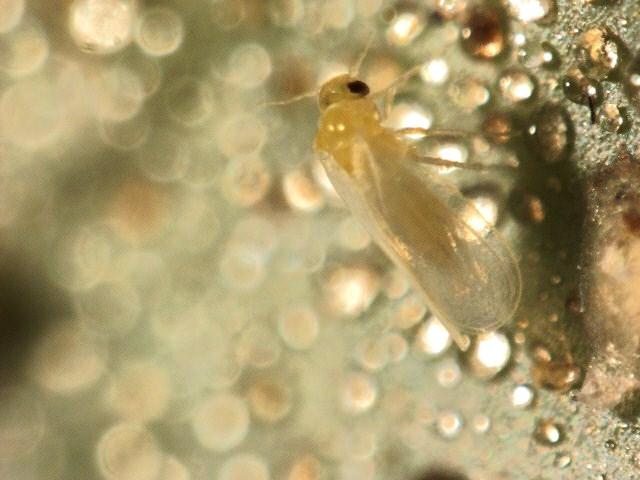 |
|
|
|

|
|||
| |
|||
Most of the people involved in Vegetable Production knows that WF damages and kills crops by sucking their sap, spreads viruses, and excretes a sticky substance called honeydew. In 1992 SPW (Sweet Potato Whitefly), Bemisia tabaci was considered an occasional virus vector. Today it is one of the main pests in desert melons and vegetables. Spraying is a fairly effective control method. But whiteflies could develop resistance and new biotypes have been discovered recently, that's why Research Scientist and Extension Specialist John Palumbo at the University of Arizona, Yuma Agricultural Center is conducting several efficacy experiments developing new methods to improve whitefly population management. There are different methods of monitoring adult SPW. Yellow sticky traps can be used to monitor adult flight activity, sampling for adults and immature SPW should be centered in young foliage. The most practical method to sample WF for PCAs is by turning leaves carefully when the insect is not so active which is early in the morning. This method is also used in our experiments at the U of A for evaluating the efficacy of the different new chemicals against SPW. I would like to describe in this update a different method used by researchers inside and outside the U of A to sample their cantaloupe whitefly efficacy experiments "Adult WF Sampling with vacuum". This is done in the Yuma Ag. Center using a heavy duty 2gal.cordless wet dry vacuum, which runs with an 18 volt battery. Plastic cups are properly labeled with the treatment and replication number for insect collection. Cups are placed in the suction hose these cups have a nylon mesh at the bottom which prevents the insects from going into the vacuum deposit, so they get collected in the cup. We vacuum three seconds each plant, the number of plants per experimental plot is determined by Dr. Palumbo usually 5 plants is sufficient with a good WF population then we put the lids in the cups. In order to identify by species and count such high numbers we place the cups in a freezer for about 1hr. then the content is taken out and evaluated under a stereomicroscope. The data obtained is then analyzed by the researcher, obviously the lower numbers are the most efficacious products for WF control, finally recommendations are offered to PCAs and growers.
To contact Marco Peņa go to: marcop@ag.arizona.edu
|
|||
| Back | |||
For questions or comments on any of the topics please contact Marco Pena at the Yuma Agricultural Center. |
|||
| Home | Cotton
| Veggies | Forages
| Grains | Citrus
| Crop x Crop Insects | Diseases| Weeds | Pesticides | Economics | News | Weather | Research | Photos | Contacts | General Info. Copyright © 2001 University of Arizona, College of Agriculture and Life Sciences Webmaster: Al Fournier (acis@ag.arizona.edu) |
|||
